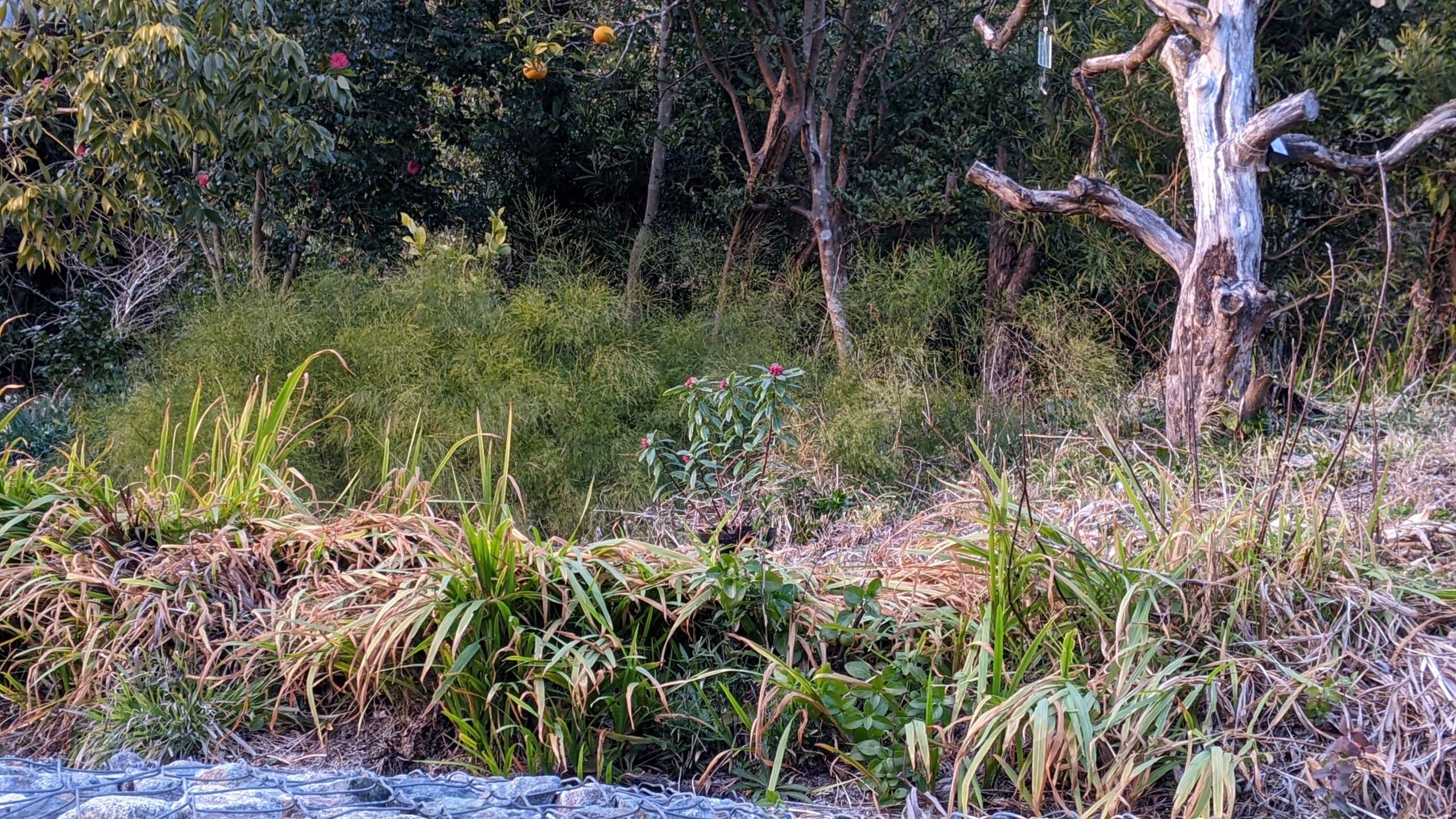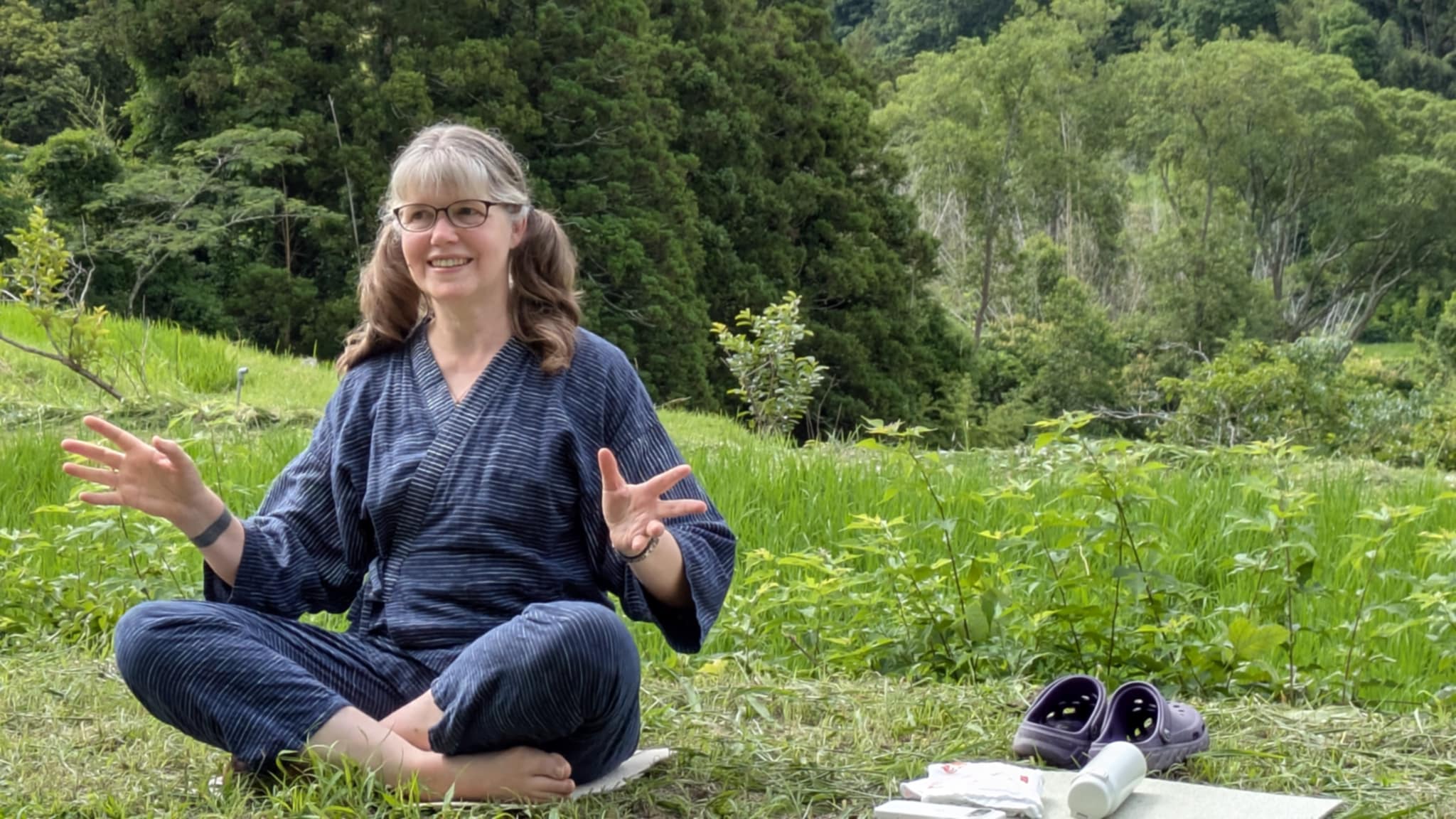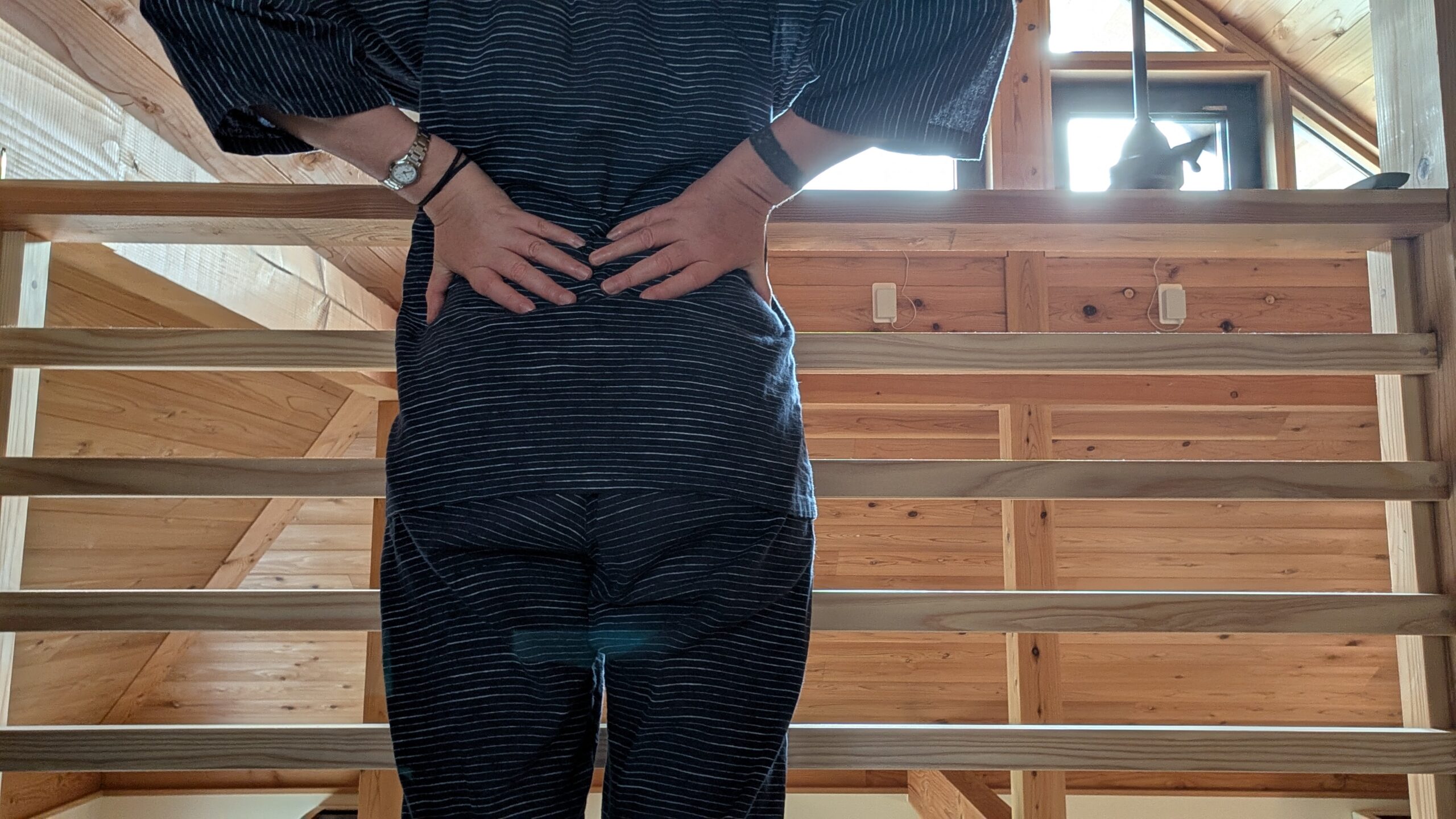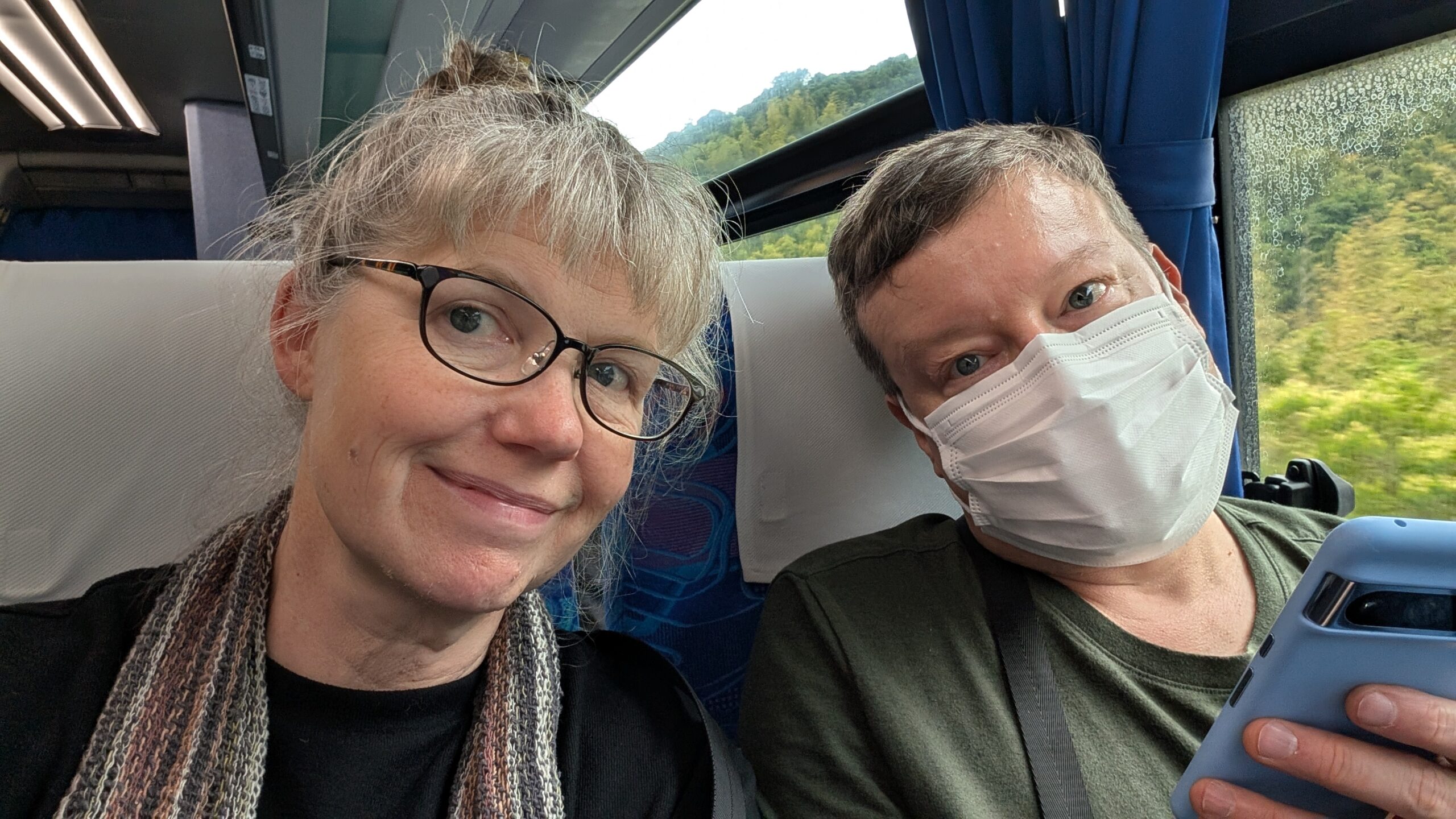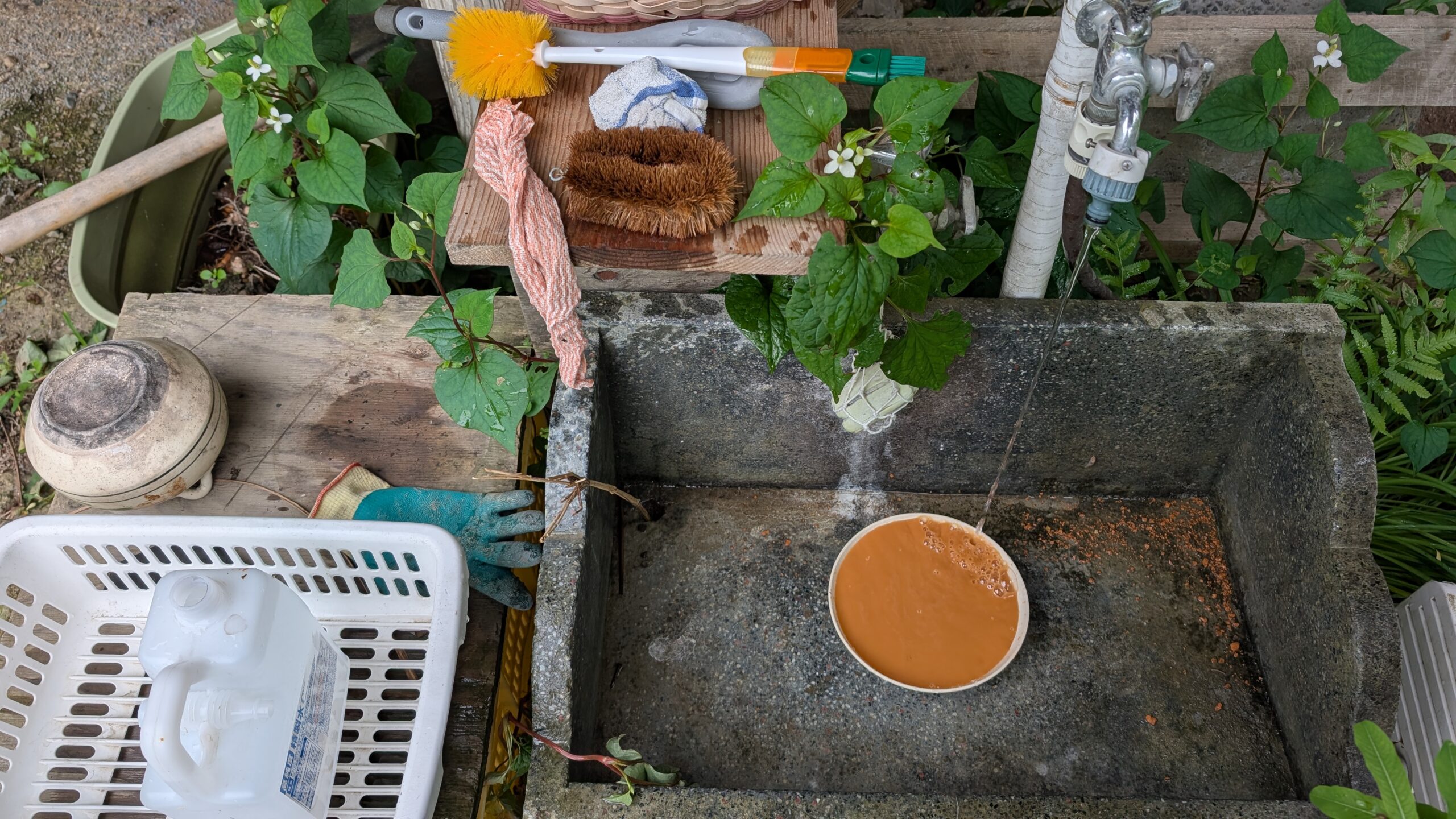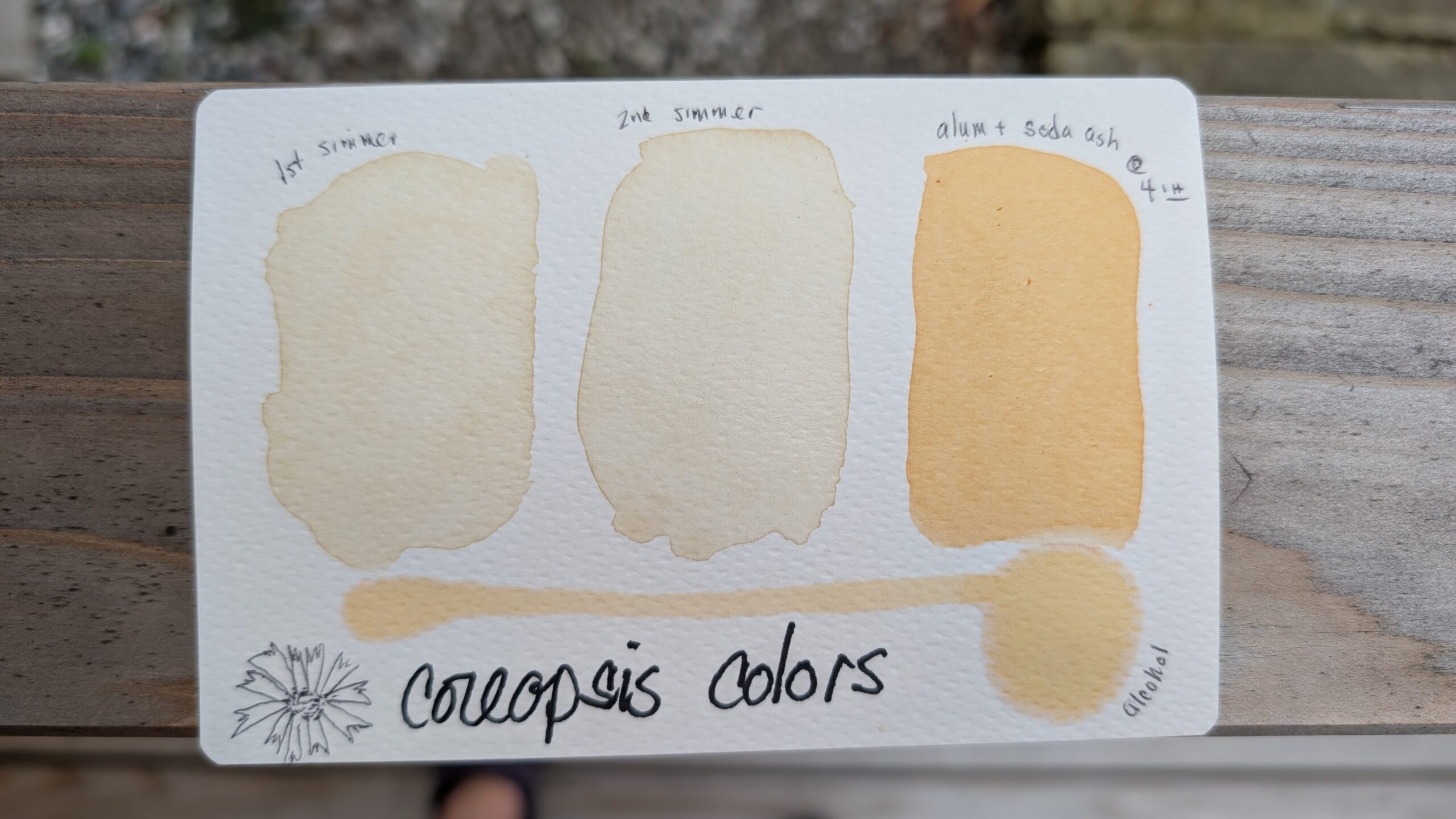The property around 555 is a jungle. I love it that way, yet I feel the need to tame it. I want a diversity of things growing, attracting insects, birds, and other animals but at the same time, I want to be able to enjoy the space around me without climbing through weeds. And the best way to do that, in my mind at least, is by making paths through the jungle.
This morning, I planned to go work in the hatake garden, but a broken tree in the front garden required cleaning up (How did it break? It was standing normally yesterday). So I grabbed my saw and secateurs. That really changed my trajectory.
Instead of working in the hatake, I worked around the edges of the garden and ended up exploring paths.
Path 1: The Ent Road

For the rest of the morning, I used my saw and secateurs to cut bamboo and trim the branches off. With each length, I created a boundary fence along the Ent Road.
This used to be a real road, dirt, but passable by vehicles. Now it is badly ingrown with bamboo and its rocky boarder is lost under weeds.
Perhaps my fence building will slow the monkeys or deflect the wild boars. At least it widened the space a bit; we can probably mow it with the hammer knife rotor now.
Path 2: Upper East Side
After lunch, I planted new shrubs – two daphne and a wattle. While I was on the Upper East Side with the wattle, I decided to tidy up the edge of the embankment by ripping vines from the trees. This is a good season to get them. It probably won’t make much of a difference in the long run but it felt productive and, at least for now, the trees less restricted.
Also I discovered a dead tree, which I was able to push over the edge. Actually, it discovered me as I leaned on it for support while ripping honeysuckle off its neighbor. It wobbled more than I did, so I gave it a couple of good shoves and directed it out over the edge into the old road.

I dragged the tree around the corner to the brush pile in the old rice field. It has all manner of large branches, tree trimmings and random stuff. The Kawasakis tell me it will help to keep away boars. Great! But I also used the brush pile to dump out decades-old pickled plums from the barn. That definitely attracted wildlife; I found plums scattered along the path as I dragged the tree over. Oops.
Path 3: Water
While dropping off the tree, I heard a gurgling water sound down in the lower field, which is completely overgrown with 2 meter high grass and goldenrod stalks from last year.
The sound was like a scuba diver’s bubbles popping on the surface. I remembered the 1975 aerial photo of the property hinted something pond-like way down at the bottom of the hill. Intriguing.

Of course I had to investigate. I ducked and weaved my way down through the tangle of overgrowth, watching the terrain grow muddier and heavier with boar traces – hoofprints, cleared paths under brambles, dents from wallowing, and their never-to-be forgotten stink.
Which started to make me a bit nervous to be there alone. What if that sound was a boar taking a bath? Do boars gurgle? I decided to text Tod to let him know where I was, just in case something went awry.
I turned out to be – not an inoshishi having as bath, as I had feared – an exposed bit of irrigation pipe bubbling air to the surface of a pool. Could this be part of the mysterious “mountain water” system?
Recently a neighbor who I didn’t know came over to ask if we had water. She meant mountain water. And we did, but she was running out. Over the last two weeks, ours has been dwindling, too. Perhaps this is why.
Path 4: Orchard
Now that I was down in the lower terraces and tromping around the deep jungle of crunchy plants, I decided I would continue this exploration.
I wanted to figure out which terrace mapped to the former orchard. Was it two up from the gurgle, or three? A few years ago, before the house burned, one of the upper paddies was our starting point to climb the mountain. I didn’t remember it having anything remotely like an orchard, but I wasn’t looking for that then.

So I walked back up the terraces in that direction, and discovered a large tree had fallen off the mountain across the path we used to take to the ridge. It opened a route to the possible orchard space, so I climbed up into that terrace and had fun jumping up and down on dead bamboo.
Breaking down bamboo this way is a bit like bouncing on a trampoline that breaks. Also probably a good way to break an ankle. So I texted Tod again with an update on my foolish fun.

This patch of dead bamboo was the most open space on that level. Towards the direction of the house, I spied some newer trees and a few that looked very old – and covered with vines and wild rose. But it was getting late in the afternoon and I was running out of steam for heavy vine removals.
Instead, I decide to climb the mountain.
Path 5: The Shrine
To be honest, it’s not much of a mountain. But it is “our” mountain so it’s fun to be up there. There are so many paths crisscrossing it – with evidence of monkeys, deer, tanuki, and boars. There’s the occasional human touch, too.



My goal was to visit what I suspect was once a shrine at the top of the hill. Now it is just a deep indentation ringed by rocks. I found it, clearing a path on the way with the secateurs I still carried in my pocket.

I piled a cairn of stones in the hollow to make a focal point and fixed up the outer ring of rocks. I love this little power spot; it’s one of thousands hidden in the mountains of Japan. I could stay here for hours.
But the sun was tinged with gold and I made my way back down the mountain. I was enjoying the walk so much that I overshot the turn to descend. I decided I would come up again soon with some flagging tape to mark the path.
